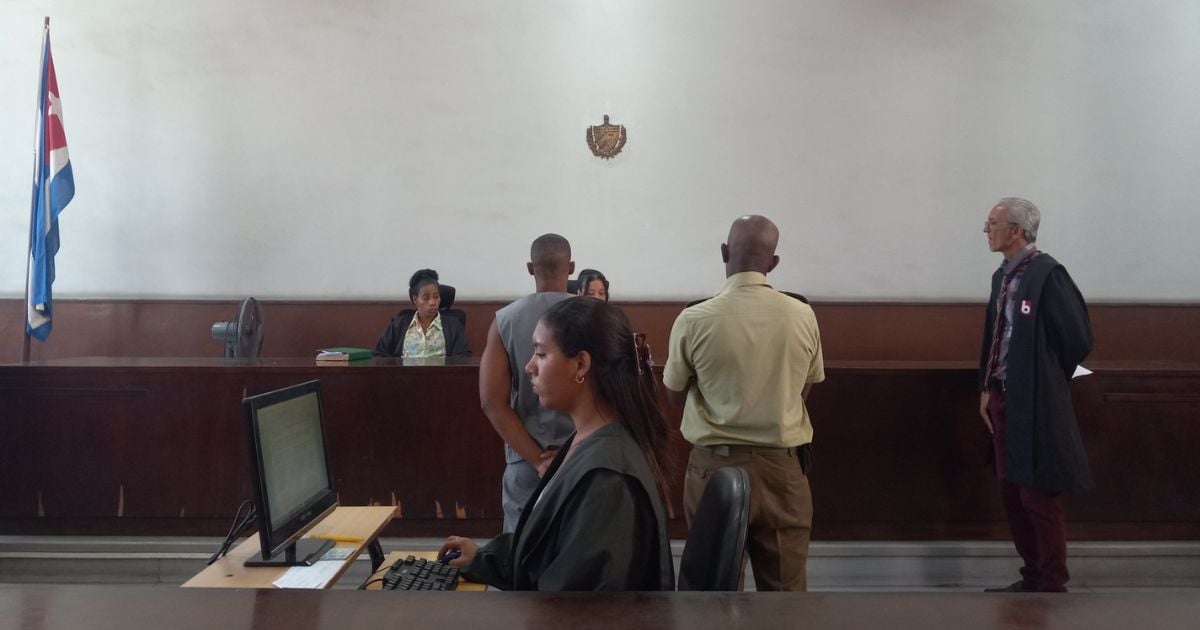The Provincial Popular Court of Santiago de Cuba has sentenced two young men to prison terms of eight and nine years for offenses related to illegal drugs. These public trials, described by the regime as "deterrent," are part of Cuba's renewed crackdown on drug-related activities after years of limited visibility on the issue. The verdicts were announced through official statements released by the court on its institutional website.
In the first case, identified as case 40 of 2025, a 29-year-old man was sentenced to eight years in prison for cultivating cannabis sativa, commonly known as marijuana, with the intent to profit. The arrest took place at his residence on the Siboney Highway, kilometer 10.5, in the El Brujo area. Authorities seized a 1.50-meter-tall plant and a box of cigarettes containing dried marijuana leaves. The Provincial Forensic Laboratory confirmed a total weight of 286.7 grams of the substance.
The court found the defendant guilty of cultivating and possessing marijuana for distribution to consumers, actions penalized under subsections a) and d) of article 235.1 of the Penal Code, according to the statement. Alongside the main sentence, additional penalties included the confiscation of the drugs, deprivation of certain rights, and a travel ban. Judicial authorities stressed that the trial adhered to constitutional guarantees and due process, allowing both the convict and the prosecution the right to appeal.
In the second case, noted as case 36 of 2025, a 28-year-old man from Baire received a nine-year sentence for dealing marijuana and synthetic cannabinoids, referred to as "the chemical." Arrested on July 1, 2024, during the investigatory operation named "Consorcio," he was apprehended on a bus traveling from Palma Soriano to Contramaestre. At the time of his arrest, two bonbon-style packages were found in his pocket: one with 3.56 grams of marijuana and the other with 1.83 grams of the chemical.
The court demonstrated that the defendant engaged in distributing these substances within the Popular Councils of Baire, Maffo, and Lumumba, and maintained connections with individuals monitored for drug trafficking and cultivation. The sentence included the seizure of proceeds from sales, the deprivation of rights, and a travel ban. Like the previous case, this trial was deemed a deterrent, with assurances from the official note that procedural safeguards were observed.
In March, reports emerged of the Cuban regime intensifying its use of deterrent trials to harshly punish drug-related crimes. These proceedings aim to publicly reprimand those involved, particularly young individuals accused of drug consumption or trafficking. Shortly thereafter, several Cubans were sentenced to 10 years for trafficking "the chemical" in Sancti Spíritus. Authorities linked them to a network operating in urban and rural centers, highlighting the dangerous sale of highly toxic and addictive substances to minors.
Recently, the trial of a young woman in Santiago de Cuba, accused of smuggling drugs from Jamaica, drew attention to the increasing role of women in the drug trafficking chain, raising alarms about the feminization of this phenomenon amid economic crises. In April, an incident related to drug activities disrupted community life in Santiago de Cuba. On April 1, 2025, residents took drastic measures to halt the sale of drugs in their neighborhood. Growing public frustration over institutional inaction and the rise of micro-trafficking has led to attempts at vigilante justice and public outcry on social media.
Understanding the Legal Context and Impact of Drug Trials in Cuba
What were the charges against the young men in Santiago de Cuba?
The charges involved cultivating and distributing marijuana and synthetic cannabinoids, which are illegal under Cuban law.
What penalties were imposed apart from imprisonment?
Additional penalties included drug confiscation, deprivation of rights, and travel bans.
How does the Cuban government justify these trials?
The government describes these trials as deterrent measures aimed at discouraging drug-related activities by setting public examples.
Are these trials part of a larger government initiative?
Yes, they are part of a broader crackdown on drugs, following years of limited public focus on this issue.
